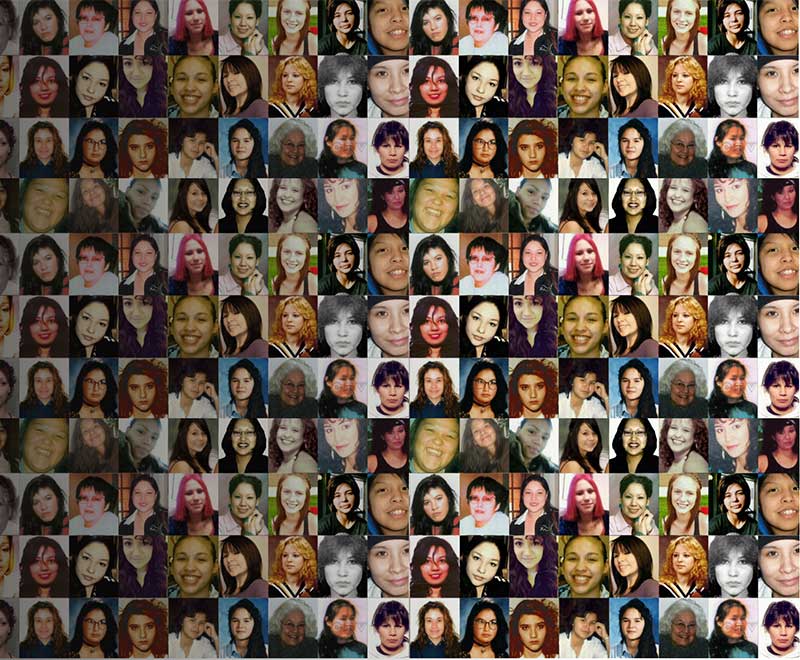What of the Lost Women of Color?
Blacks Found Van Peebles Pioneering, Controversial
White House Wants More Info on ‘Horrific’ Videos
Media Industry Ranks Last in Employing Latinos
Reporter Helped Create Hispanic Heritage Month
Who Best to Discuss George Floyd? Take a Guess
Washington Post to Add 41 Editing Jobs
Guild Questions Unpaid Overtime at Gannett
SPJ Board Is Its Most Diverse Ever
USA Today Revisits ‘The Movement,’ Circa 1961
Law Gives Single Moms an Untenable Choice
Short Takes: Los Angeles Times Emmy front page; immigration reporter is undocumented; who is shot by Utah police, racially?; pandemic pushes some journalists to the brink; what community organizing can teach journalists; Malika Andrews; Chicago Reporter; Color of Change; Cheryl Bennett; Willard Jackson; interactive exhibit on racist violence; Zinhle Essamuah; 3.5 million records of previously enslaved people; videographer of Rodney King beating; Ecuador reversing repression; dismissal of workers by Nicaragua’s La Prensa.
Homepage photo: Missing and murdered indigenous women, from the Urban Indian Health Institute.
Updated September 23
Support Journal-isms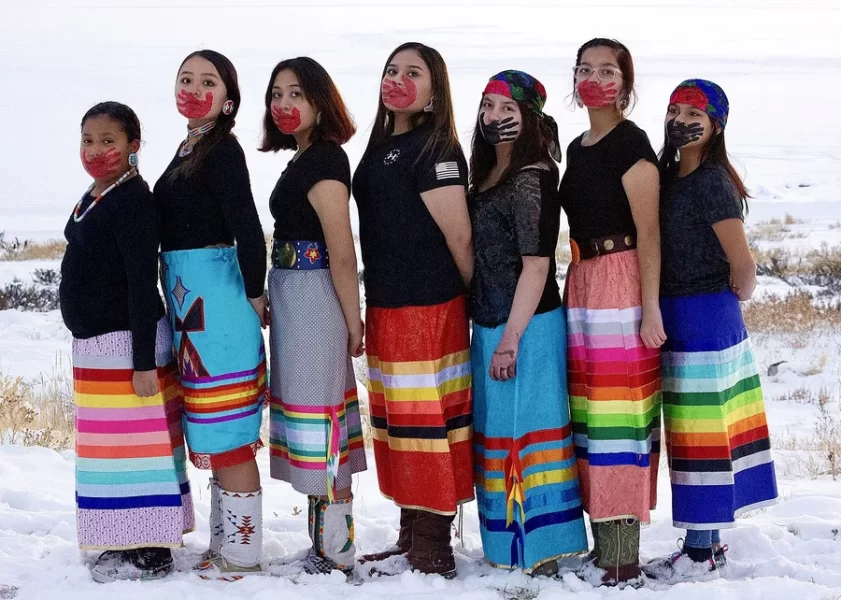
What of the Lost Women of Color?
Media fascination with the case of Gabrielle Petito has led to a revival of what the late Gwen Ifill termed “Missing White Woman Syndrome.”
“Hundreds of thousands of people are reported missing in the United States every year,” Katherine Rosman wrote Monday, updated Wednesday, for The New York Times. “But it’s rare for a single case to capture the public’s attention — and galvanize individuals to take action — as the disappearance of Gabrielle Petito has.
“In July, Ms. Petito, 22, embarked from New York on a cross-country road trip with her fiancé, Brian Laundrie, 23. As they made their way out West in a white Ford van, the couple posted photos and videos of their journey on Instagram and YouTube. Then, on Sept. 1, Mr. Laundrie returned from the trip alone. Ten days later, Ms. Petito’s family reported her missing.
“The case has become a national sensation, in large part because of the awareness generated by people who are watching it unfold on social media. Each new development has been followed by flurries of explainer posts and videos from would-be detectives on TikTok, Instagram and Twitter, who have seen their follower counts balloon. Theories have been debated and debunked. And an influencer couple may have helped locate Ms. Petito’s remains. . . .”
On MSNBC’s “The ReidOut” on Monday, Joy Reid asked, “The way this story has captivated the nation has many wondering: Why not the same media attention when people of color go missing? Well, the answer actually has a name: Missing white woman syndrome.”
“And that’s frustrating to people who say the media ignores an epidemic of missing and murdered Native American women” in Wyoming, where Petito was reported missing and where her remains were found,” Kamila Kudelska reported Tuesday for NPR.
“Since 2000, Indigenous people have made up 21% of homicides in Wyoming, even though they are only 3% of the population. That’s according to a state report released in January. [PDF]
“Cara Chambers, chair of the task force that released the report says only 30% of Indigenous homicide victims had any media coverage. That number is closer to 51% for whites.
” ‘The themes and media portrayal of homicide victims [are] that when you had an Indigenous victim, the articles were more likely to have negative character framing,’ Chambers said, ‘more violent and graphic language, really focusing more on sort of like where the homicide occurred versus anything about the victim.’ “
On the site Your Tango, editor Nia Tipton wrote Monday, “Black people make up 13.4% of the American population, and yet it’s shown that 33.8% of reports in 2019 were for missing Black people.
“Black people go missing at a rate three times higher than expected based on population numbers, and many of the reasons fall on the oppressive systems that are put into place. Ranging from poverty, homelessness, and incarceration, to inequity in health and education services.”
Moreover, “once a Black person goes missing though, they are a lot less likely to be found.”
Lindsey Ellefson wrote Tuesday for The Wrap, “Reid cited other instances of the so-called syndrome, including the media attention on the cases of Natalie Holloway and Laci Peterson, before being joined by Derica Wilson of the Black and Missing Foundation and Lynette Grey Bull of Not Our Native Daughters.
“Online, there was backlash to Reid’s assessment, but there was also support as viewers shared reports that highlight how many missing persons reports have been about Native American women or women of color.”
A common theme among the dissenters: Why doesn’t Reid use her platform to spotlight these missing women of color?
Indeed, why don’t more media figures?
- Jeremy Barr, Washington Post: Even within the media, some question the amount of Gabby Petito coverage
- Charles M. Blow, New York Times: Gwen Ifill Was Right About ‘Missing White Woman Syndrome’
- Molly Jong-Fast, Daily Beast: What Gabby Petito’s Case Says About Cops — and Us
- Justin Ray, Los Angeles Times: Gabby Petito and missing persons cases in California: The numbers and resources you should know
- Katie Robertson, New York Times: News Media Can’t Shake ‘Missing White Woman Syndrome,’ Critics Say
- Kate Sheehy, New York Post: Critics claim ‘missing white woman syndrome’ has overshadowed these missing persons cases
- Urban Indian Health Institute: Our Bodies, Our Stories: Our work to advocate and provide data to protect Native women and girls. (2018)
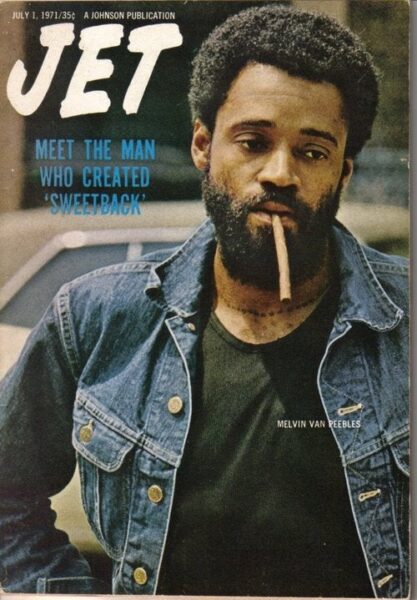
Blacks Found Van Peebles Pioneering, Controversial
Which writers have had the best take on Melvin Van Peebles, the pioneering but controversial Black film maker whose death at 89 was announced Wednesday by his son, Mario Van Peebles.
 One contender would be Hollie I. West (pictured), retired Washington Post journalist, who wrote in 1980:
One contender would be Hollie I. West (pictured), retired Washington Post journalist, who wrote in 1980:
“So the Van Peebles who stirred burning anger in the black community in the early ’70s with his superstud routine has proven himself as one of the few black writers working regularly in establishment circles on Broadway and in Hollywood. But the ‘Sweetback’ period brought down the wrath of many black intellectuals who complained that Van Peebles was solidifying black stereotypes.
“Psychiatrist Frances Welsing said: ‘A black penis never knocked off any white man.’ Poet Haki R. Madhubuti (Don L. Lee) said the movie was a ‘moneymaking, autobiographical fantasy.’ And Ebony magazine editor Lerone Bennett, Jr. called it a ‘negative landmark.’
“In answer to a question the other night about his reaction to critics, the writer’s answer was classic Van Peebles. ‘F — ’em,’ he said with a scowl. . . .”
Later, Van Peebles would win kudos from the African American Film Critics Association, which honored him in 2008 and 2011.
A statement from Mario Van Peebles, The Criterion Collection and Janus Films said of Van Peebles, “His work continues to be essential and is being celebrated at the New York Film Festival this weekend with a 50th anniversary screening of his landmark film ‘Sweet Sweetback’s Baadasssss Song’; a Criterion Collection box set, ‘Melvin Van Peebles: Essential Films,’ next week; and a revival of his play ‘Ain’t Supposed to Die a Natural Death,’ slated for a return to Broadway next year.”
Referring to his daily digital show, Roland Martin asserted on Twitter Wednesday night, “No one else will pay tribute to #MelvinVanPeebles the way we just did on #RolandMartinUnfiltered BlkStarNetwork. We ain’t waiting on mainstream media! We are following his model: independent Black-owned media w/full ownership and control! . . .”
The legendary actor, director and composer, #MelvinVanPeebles, has died at the age of 89. Guest host @MrShannonLanier opens #BlackNewsTonight paying homage. pic.twitter.com/z5VuuQSP18
— BNC (@BNCNews) September 23, 2021
[Added Sept. 23]
- Mike Barnes, Hollywood Reporter: Melvin Van Peebles, Godfather of Black Cinema, Dies at 89
- Earl Caldwell interview of Hollie West for Robert C. Maynard Institute for Journalism Education (2001) (video)
- Kevin Powell, Washington Post: Melvin Van Peebles was my father, too
- Barbara Rodgers, Facebook: A 1973 visit to Rochester, N.Y.
- Chris Wiegand, The Guardian: Melvin Van Peebles obituary
“In the Al Jazeera video, a law enforcement officer on horseback is seen swirling the long reins near a group of migrants. Shortly beforehand, another individual on horseback is heard yelling at the migrants, saying, ‘You use your women? This is why your country’s sh*t, because you use your women for this,’ ” Jason Hoffman, Priscilla Alvarez, Geneva Sands, Paul LeBlanc and Paul P. Murphy reported for CNN.
White House Wants More Info on ‘Horrific’ Videos
“White House press secretary Jen Psaki said Monday that the White House is seeking more information on the ‘horrific’ viral videos that appear to show US Border Patrol agents on horseback confronting Haitian refugees at the US border,” Jason Hoffman, Priscilla Alvarez, Geneva Sands, Paul LeBlanc and Paul P. Murphy reported Tuesday for CNN.
” ‘I’ve seen some of the footage. I don’t have the full context. I can’t imagine what context would make that appropriate, but I don’t have additional details, and certainly I don’t have additional context,’ Psaki said at the White House press briefing. ‘I don’t think anyone seeing that footage would think it was acceptable or appropriate.’
“Videos taken by Al Jazeera and Reuters appear to show law enforcement officers on horseback using aggressive tactics when confronting migrants, including authorities swinging long reins near migrants who crossed the US-Mexico border near Del Rio, Texas.
“Reuters video shows the officers at the water’s edge, twirling the long reins as migrants crossed the border at the US shoreline of the Rio Grande. At one point in the video, the officer’s horse nearly charges into one of the migrants, who falls back and into the water. . . .”
Meanwhile, James North wrote in the Washington Monthly “about the GOP’s manufactured outrage against the Biden administration and how its talking points successfully proliferated throughout media coverage of migration at the Mexican-American border,” Lauren Harris summarized for Columbia Journalism Review.
“Some reports emphasized the political ‘challenge for Biden,’ instead of the humanitarian challenge for the Haitians,” North writes. “But the mainstream media’s biggest failure is that it ignores U.S. complicity in the chronic crisis in Haiti, especially in the decade since the devastating 2010 earthquake. . . .”
Brian Stelter added in his “Reliable Sources” newsletter, “No surprise here, but many Fox News hosts and personalities are exploiting the tragic situation to promote fear of migrants. Lara Logan, for instance, went on the right-wing channel’s air and claimed that ‘bioweapons specialists’ had told her the surge was a way to potentially launch a ‘virus attack’ in the country. Anchor Martha MacCallum, purportedly a ‘straight news’ anchor on that network, didn’t even bother to interrupt her.
“Elsewhere, the coverage is as you would expect. Tucker Carlson led his program with it, once again advancing the racist ‘Great Replacement’ theory that a ‘HAITAN CARAVAN’ was being intentionally allowed into the country to help change the demographics so that Democrats can firm up control. It’s all reprehensible, but also oh so predictable… “
- Center for Public Integrity: Public Integrity Sues for National Guard Border Deployment Records
- Elvia Diaz, Arizona Republic: So, it’s OK to treat Haitians like cattle? I can’t believe people actually believe this
- Sergio Flores, The Washington Post in National Geographic: Photos capture desperation as Haitian migrants hope for asylum at Texas border
- Larisa Karr, Haitian Times: Eleven basic facts to know about the Haitian migrant crisis
- Omar Ornelas and Lauren Villagran, El Paso Times: Mexican government cracks down on Haitian migrants in Ciudad Acuña
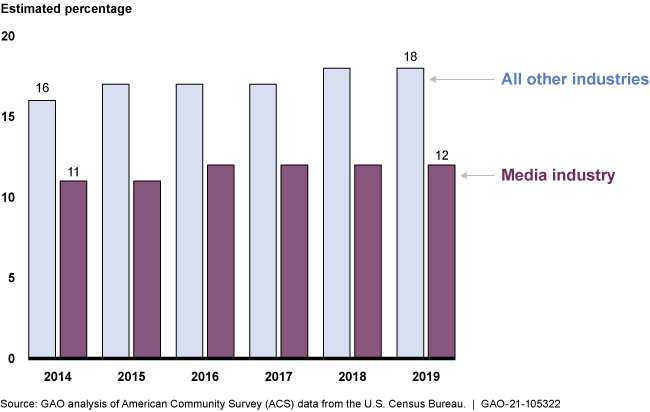
Media Industry Ranks Last in Employing Latinos
“The media industry had a lower percentage of Hispanic workers than the percentage for all other industries combined in 2019, according to the most recent data from the Census Bureau’s ACS [American Community Survey],” [PDF] the Government Accountability Office reported Tuesday.
“Specifically, Hispanics made up an estimated 12 percent of workers in the media industry compared to an estimated 18 percent of workers in the rest of the workforce (workers in all industries outside of the media industry combined) . . .”
The report also found that the biggest growth among Hispanics in the media industry was in service jobs, while management jobs had the lowest representation, as Astrid Galvan noted Tuesday for the Associated Press.
The report also said its analysis of data from the Census Bureau’s American Community Survey “shows little increase in the overall representation of Hispanics in the media industry in recent years. Hispanic representation in the media industry remained at an estimated 11 to 12 percent of the media industry workforce from 2014-2019, while Hispanics comprised 16 to 18 percent of workers in all other industries combined over the same time period.”
Similarly, media company reports to the Equal Employment Opportunity Commission “stated Hispanic representation in their workforce remained at 10 percent from 2014-2018, the most recent years of EEOC data available. . . .”
 The AP’s Galvan wrote, “U.S. Rep. Joaquin Castro (pictured), D-Texas, has made the inclusion of Latinos in media a principal issue, imploring Hollywood studio directors, journalism leaders and book publishers to include their perspectives.
The AP’s Galvan wrote, “U.S. Rep. Joaquin Castro (pictured), D-Texas, has made the inclusion of Latinos in media a principal issue, imploring Hollywood studio directors, journalism leaders and book publishers to include their perspectives.
“Castro says the lack of accurate representation, especially in Hollywood, means at the very best that Americans don’t get a full understanding of Latinos and their contributions. At worst — especially when Latinos are solely portrayed as drug dealers or criminals — it invites politicians to exploit negative stereotypes for political gain, Castro said.
“That could engender violence against Latinos, like the killing of 23 people in El Paso in 2019 by a gunman who was targeting Hispanics. . . .”
- Stephania Taladrid, New Yorker: The Exclusion of Latinos from American Media and History Books

Reporter Helped Create Hispanic Heritage Month
 “Every year when Sept. 15 rolls around, I smile to myself,” Robert J. Lopez (pictured), an accountability reporter for the Los Angeles Times with a special focus on underserved communities, wrote in 2013 for the Times, reprised for this year’s commemoration.
“Every year when Sept. 15 rolls around, I smile to myself,” Robert J. Lopez (pictured), an accountability reporter for the Los Angeles Times with a special focus on underserved communities, wrote in 2013 for the Times, reprised for this year’s commemoration.
Lopez was describing his role in creating Hispanic Heritage Month, which began Sept. 15.
“I was a Mexican American college student in Washington and was asked to get cosponsors for a bill that would create a month-long observance honoring the achievements of Latinos — National Hispanic Heritage Month.
“I had already spent five months as an intern for Democrat Jaime B. Fuster, Puerto Rico’s delegate to Congress. Through connections, I lined up a second internship with the Congressional Hispanic Caucus.
“It was May 1988 and an exciting time to be in Washington. There were emotional debates over economic sanctions targeting apartheid in South Africa. The town was abuzz over the upcoming presidential race that would likely pit Vice President George H.W. Bush against Michael Dukakis, the Democratic governor of Massachusetts.
“The bill that I was asked to work on was officially titled H.R. 3182. It would amend a 1968 federal law that established National Hispanic Heritage Week and change it to Hispanic Heritage Month. The commemoration period, which would start Sept. 15, included the independence anniversaries of Mexico, Nicaragua, El Salvador and Chile, as well as Columbus Day, or Dia de la Raza, as it’s known in Latin America.
“A related bill already had passed the Senate, and though all 13 Latino members of Congress were in the House, getting enough supporters was far from a slam dunk. Getting the bill passed would undoubtedly encounter resistance, though I had no idea how much. . . .”
- Stef Bernal-Martinez, Learning for Justice: Unmaking “Hispanic”: Teaching the Creation of Hispanic Identity (2018)
- Laura Casillas, KUSA-TV, Denver: How a former Latino anchor continues to inspire youth to pursue careers in journalism
- “Good Morning America,” ABC News: Who is making Hispanic Latinx history right now: The ‘GMA’ Inspiration List 2021
- NBCUniversal: NBCUniversal News Group Honors Hispanic Heritage Month With In-Depth Coverage Across All Platforms
- NBCUniversal: NBCUniversal And Telemundo Launch Its First Ever Bilingual Hispanic Heritage Month Campaign “Come With Us”
- Southern Poverty Law Center: In Plain Sight: Uncovering Border Patrol’s Relationship with Far-Right Militias at the Southern Border (July 29)
- Stephania Taladrid, New Yorker: The Exclusion of Latinos from American Media and History Books
- Kristal Termini, WBAY-TV, Green Bay, Wis.: National Hispanic Heritage Month (Twitter)
Who Best to Discuss George Floyd? Take a Guess
On five prominent Sunday morning TV news shows in 2020, white men (31%) were the most frequent guests discussing George Floyd’s murder and racial justice, the Women’s Media Center reported Tuesday. “Black men followed, with 27%, and Black women, with 24% of all guest appearances.”
That statistic was part of a broader study.
“A yearlong review by WMC of five of the nation’s most influential Sunday morning shows revealed that 68% of all 1,671 guest appearances were by men in 2020 compared to 32% by women, although women make up nearly 51% of the nation. White men — who comprise 30% of the country — made up 53% of all appearances. Women of color, 20% of the U.S. population, represented less than 13% of all guest appearances.
“Of the 258 episodes analyzed, not a single regular or substitute host was a person of color.
“The report, ‘WMC Report: Gender and Race Representation on Five Big Sunday Shows January 1 – December 31, 2020,’ examined the guests on NBC’s Meet the Press, CBS’s Face the Nation, ABC’s This Week, Fox News Channel’s Fox News Sunday, and CNN’s State of the Union. It also analyzed coverage of three of the biggest issues of the year: The COVID-19 pandemic, the 2020 presidential election, and George Floyd’s murder and racial justice protests. . . .”
Separately, Christoph Mergerson, a visiting assistant professor in race and media at the University of Maryland’s Philip Merrill College of Journalism, might have unwittingly offered a defense of the racial composition of the panels discussing Floyd. Mergerson set out to examine how media outlets in the South conducted their coverage of the pandemic and the Black Lives Matter movement, as they related to Black and Hispanic communities in the South.
He told Sara Sheridan of Columbia Journalism Review, “I’ve talked to more than one journalist who was like, “Our job isn’t just to reflect what Black and Hispanic communities are saying about these issues. It’s about waking white communities up and helping them understand what’s going on so that they don’t look away.”

Washington Post to Add 41 Editing Jobs
 “The Washington Post is expanding its editor ranks as it pushes forward with plans for growth in national and international coverage under its new executive editor, Sally Buzbee (pictured). . . .,” Katie Robertson reported Monday for The New York Times.
“The Washington Post is expanding its editor ranks as it pushes forward with plans for growth in national and international coverage under its new executive editor, Sally Buzbee (pictured). . . .,” Katie Robertson reported Monday for The New York Times.
“The new positions will increase the number of journalists of color in editing roles, Ms. Buzbee said in an interview,” Robertson wrote.
“ ‘A real benefit toward us in a situation like this is ensuring that this will also improve the diversity of our staff, provide career paths across the newsroom for a more diverse group of people, for people from a wide variety of backgrounds and skill sets,’ she said. . . .”
The Monday announcement from Buzbee and other editors began, “We are delighted to announce a major expansion to accelerate our transformation into a fully 24/7 news organization and strengthen the leadership of the newsroom.
“The addition of 41 editing positions will grow our capacity to produce timely breaking news, revelatory enterprise and definitive investigative work; create visually rich stories that our audiences find compelling; cover topics that resonate with younger, more diverse readers; and develop innovations that will define a new era of digital journalism. The expansion will allow us to create a greater number of career paths across the newsroom and increase the number of journalists of color in editing roles. . . .”
- Andrew Beaujon, Washingtonian: Inside the Plan to Make Jeff Bezos’s Washington Post the Everything Newspaper (Aug. 25)
Gannett employees appear in this promotional video for the company.
Guild Questions Unpaid Overtime at Gannett
“The NewsGuild, a labor union that represents thousands of journalists, is investigating the workplace culture of US newspaper conglomerate Gannett (GCI), starting with the issue of unpaid overtime work,” Kerry Flynn reported Tuesday for CNN.
“NewsGuild President Jon Schleuss sent a letter to Gannett CEO Mike Reed last Friday about the union’s plan to launch an investigation and requested the company do the same. The union also called on Gannett, which owns USA Today and more than 260 local publications including The Arizona Republic, the Detroit Free Press and The Indianapolis Star, to agree to other labor protections proposed in the ongoing union bargaining taking place in some of its newsrooms.”
Flynn also wrote, ” ‘There’s a lot of issues at Gannett,’ Schleuss said. ‘They claim that they’re supporting diversity. Well, a lot of people who are taken advantage of most when it comes to unpaid overtime are people of color and women.” ”

SPJ Board Is Its Most Diverse Ever
The Society of Professional Journalists Board of Directors has selected its two appointed members for 2021-22 and approved a third member to fill a vacancy on the board, giving the organization its most diverse board ever.
“The SPJ Board board now is made up of five Latinx, one Black woman, and three Caucasian/White members, which includes a trans woman. She is a first too,” Rebecca Aguilar, the new SPJ president, messaged Journal-isms. “We are seven women and two men. Our SPJ board is diverse in many ways and we are honored to serve our 6,000 members. SPJ does not only talk about diversity, our members made it happen.”
SPJ said in a Tuesday announcement, “Israel Balderas and Cheryl Smith were appointed during Saturday’s virtual board meeting and Danielle McLean was approved to fill the vacancy left by Claire Regan who was voted president-elect earlier this month.
“Balderas is an Emmy award-winning journalist, attorney and assistant professor of journalism at Elon University. His teaching and research focus on freedom of the press and access to public records influenced by artificial intelligence technologies. Prior to his academic appointment at Elon, Balderas taught journalism and media law at Palm Beach Atlantic University, where he also served as the faculty adviser to The Beacon Today, the school’s student-led publication.”
Smith, publisher/editor at I Messenger Media LLC in Dallas, was secretary of the board of the National Association of Black Journalists and is a board member of the National Newspaper Publishers Association, representing Black-press publishers. McLean was among a group of “transgender writers who have changed their names but aren’t easily able to correct deadnames on past work,” CNN reported in June.
‘Seven Days of 1961’ will run through December.
USA Today Revisits ‘The Movement,’ Circa 1961
USA Today Wednesday launched a new multimedia series, “Seven Days of 1961.” Created by reporter Deborah Berry, the project “spotlights seven pivotal protests in 1961 that fueled the civil rights movement and helped end legal segregation and extend voting rights to millions of Black Americans. It is extremely relevant amid the national social justice movements and ongoing debates over voting rights, police brutality, and white supremacy.
“ ‘Seven Days of 1961’ will run through December featuring compelling text, video, Augmented Reality, events, , graphic novels, and podcasts to explore how sustained action brought about sweeping change,” an announcement said.
“USA TODAY journalists involved in the project traveled with veterans of the 1961 civil rights movement to seven protest sites to learn how each protest laid the foundation for progress. Nearly every few weeks in 1961, a battle for civil rights took place in which children, young adults, and longtime activists risked their lives to fight for voting rights and the integration of schools, businesses, public transit, and libraries. Journalists tracked down historic documents, analyzed Census records and other data, and spoke to former government leaders and witnesses for their in-depth reporting on these stories. . . .”

Law Gives Single Moms an Untenable Choice
“Women who apply for welfare often have to identify who fathered their children and when they got pregnant, among other deeply personal details. State governments use that information to pursue child support from the dads — and then pocket the money,” reads the subheadline over a story Friday by Eli Hager for ProPublica.
Hager wrote, “For struggling mothers in New Mexico, a state that often ranks last in the U.S. in child poverty and well-being, this federal requirement means that they must either forgo desperately needed assistance for their children or risk complicating what are often already fraught, and sometimes abusive, relationships with their children’s fathers, if they’re even in contact with them.
“It also means that contrary to the popular understanding of child support — that it is intended to go to children — more than $1.7 billion in child support collected from fathers in 2020 was seized by federal and state governments as repayment for mothers and children having been on welfare, according to a ProPublica analysis of federal Office of Child Support Enforcement statistics.
“Close to 3 million of the nation’s poorest families had child support taken from them last year, amid the pandemic, for this reason. (Most other child support cases are initiated through a divorce or a legal action by the mother; for the majority that don’t involve a mom who has received TANF [Temporary Assistance for Needy Families] , the money does go to the kids.) . . .”
Short Takes
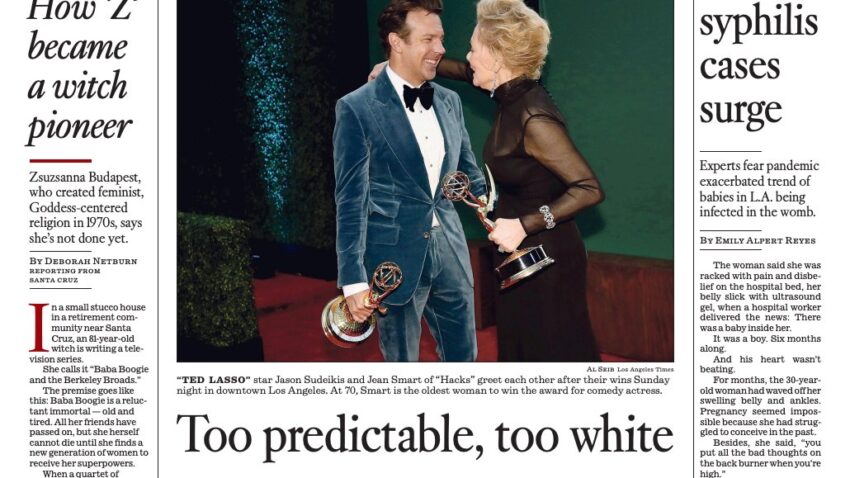
 “I’m @ABC’s first Immigration reporter/producer,” Armando Tonatiuh Torres-García (pictured) tweeted on Sept. 9. “As a journalist who happens to be undocumented, I’m so humbled to be trusted to help lead our network’s coverage of the complexities of immigrant communities across the globe.” An ABC spokesperson Wednesday confirmed Torres-García’s hire but had no comment on his immigration status.
“I’m @ABC’s first Immigration reporter/producer,” Armando Tonatiuh Torres-García (pictured) tweeted on Sept. 9. “As a journalist who happens to be undocumented, I’m so humbled to be trusted to help lead our network’s coverage of the complexities of immigrant communities across the globe.” An ABC spokesperson Wednesday confirmed Torres-García’s hire but had no comment on his immigration status.
- “Racial and ethnic minorities account for a third of the people shot at by Utah police over the past decade — despite these groups making up just a quarter of the population,” Paighten Harkins, Jessica Miller, Muna Mohamed, Taylor Eldridge and Sam Stecklow reported Monday for The Salt Lake Tribune. “In contrast, 75.4% of Utahns are white, but they account for 63.5% of all police shootings. This Salt Lake Tribune analysis is unique. No government entity in Utah tracks police shootings, and few others have tried keeping their own stats. The Tribune, with the help of the PBS series FRONTLINE, has expanded its police shooting database over the past year to learn more about who has been shot at and who is doing the shooting. . . .”
- “The effects of the pandemic on journalists are ongoing,” Sara Guaglione reported Monday for Digiday. “People are continuing to quit their jobs, leave the industry or shift roles, citing burnout from the pressures of working under the shadow of a pandemic while already in a stressful career path. The pandemic seems to be pushing journalists who were already on the verge of leaving to the brink, and those that have left are not looking back. . . .”
- Community organizing “can teach journalists how to build relationships with community members to make a difference — without crossing into activism,” Jennifer Brandel of We Are Hearken, which offers consulting and technology help, wrote Tuesday for medium.com. “The six-month project our Summit speakers worked on, called Stories of Atlantic City, illustrates how the principles of community organizing can create more diverse, nuanced coverage of a community.”
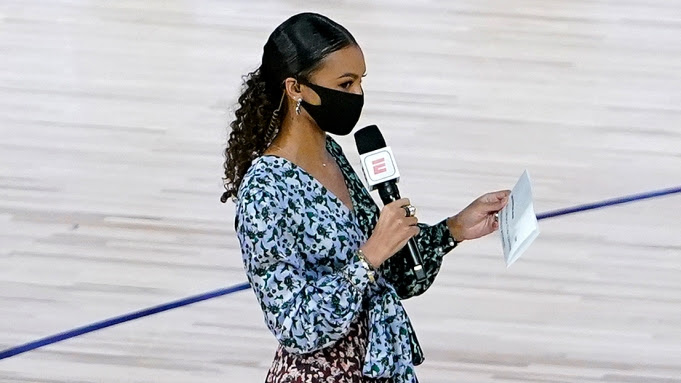
- “Malika Andrews will replace Rachel Nichols as the face of ESPN’s regular NBA coverage, in a move executives no doubt hope will bring a difficult era at the Disney-backed sports-media giant to an end,” Brian Steinberg wrote Monday for Variety. “ESPN said Andrews, who is extending her contract, will anchor ‘NBA Today,’ a new weekday basketball program that will air starting October 18, just a day before the big basketball league starts its next season. The new program will replace ‘The Jump’ as ESPN’s daily NBA studio show, and that program will air its final episode on October 8. . . .”
- Nearly 100 prominent journalists and community leaders have formed Friends of the Chicago Reporter to restore its investigative spirit as it approaches its 50th anniversary next year, Robert Feder reported Wednesday on his website on Chicago media. The independent group is headed by Laura Washington, Sun-Times columnist, ABC 7 political analyst and former editor and publisher of the Reporter. Video
- “Following a year of pledges from companies committing to do better around racial equity, Color of Change has released two new tools aimed at creating more anti-racist media and supporting anti-racist workplaces in the entertainment industry and beyond,” Abbey White reported Monday for the Hollywood Reporter. “The #ChangeHollywood Writer’s Room Database of Experts and Anti-Racist Trainer Directory are new resources to connect decision-makers with those who can help effect systemic change. The former specifically introduces film and TV producers to individual and organizational consultants who can help projects produce less inaccurate and incomplete and more authentic and anti-racist portrayals of Black people and their communities. . . .”
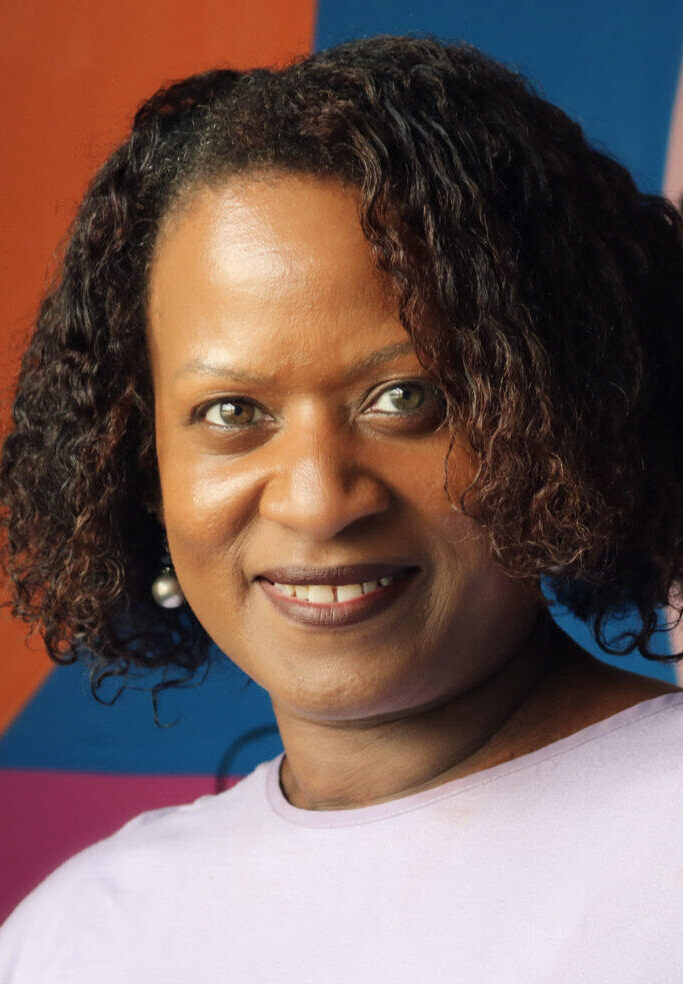 “Cheryl Bennett (pictured), a professional with over 28 years of experience in accounting, finance, human resources and business administration, has been named general manager of 88Nine Radio Milwaukee (WYMS-FM 88.9),” the station announced Monday.
“Cheryl Bennett (pictured), a professional with over 28 years of experience in accounting, finance, human resources and business administration, has been named general manager of 88Nine Radio Milwaukee (WYMS-FM 88.9),” the station announced Monday.
- Aretha Franklin’s “Respect” is the greatest song of all time, according to Rolling Stone, which polled more than 250 artists, journalists and industry figures. “Fight the Power” by Public Enemy, “A Change Is Gonna Come” by Sam Cooke, “Like a Rolling Stone” by Bob Dylan and “Smells Like Teen Spirit” by Nirvana complete the top five of 500 songs on the list.
 “The former head of Ebony who was ousted last year amid allegations of financial impropriety, is among a group of people charged by the SEC with raising money for marijuana businesses but illegally using the cash for other things — including keeping the magazine afloat,” Lukas I. Alpert reported Monday for Market Watch. “Willard Jackson (pictured), 57, is accused of taking part in a scheme that crowdfunded nearly $2 million for a series of marijuana-related real estate ventures, but whose principals kept the money for themselves, according to civil charges brought by the Securities and Exchange Commission. . . . Ebony was eventually forced into bankruptcy and sold to former NBA star Junior Bridgeman for $14 million. . . .”
“The former head of Ebony who was ousted last year amid allegations of financial impropriety, is among a group of people charged by the SEC with raising money for marijuana businesses but illegally using the cash for other things — including keeping the magazine afloat,” Lukas I. Alpert reported Monday for Market Watch. “Willard Jackson (pictured), 57, is accused of taking part in a scheme that crowdfunded nearly $2 million for a series of marijuana-related real estate ventures, but whose principals kept the money for themselves, according to civil charges brought by the Securities and Exchange Commission. . . . Ebony was eventually forced into bankruptcy and sold to former NBA star Junior Bridgeman for $14 million. . . .”
- “An interactive exhibit in Mississippi prompts visitors to speak aloud the names of people who were killed in acts of racist violence in the United States during the civil rights era — incantations in a darkened room to honor some 150 men, women and children whose lives were cut short,” Emily Wagster Pettus reported Sunday for the Associated Press. Pettus also wrote, “ ‘Say his name to begin his story,’ or ‘Say her name to begin her story,’ says the recorded narrator, journalist Charlayne Hunter-Gault, who made history in 1961 as one of the first Black students to enroll in the University of Georgia. The traveling exhibit, ‘Un(re)solved,’ was created by PBS Frontline with artist, filmmaker and technologist Tamara Shogaolu. . . .”
 Zinhle Essamuah (pictured) is joining NBC News Now, a streaming service, “from NowThis where she anchored their daily evening news show, KnowThis on Facebook Watch,” NBC announced Tuesday. “Her reporting has focused on politics, justice and culture. She has interviewed everyone from VP Kamala Harris to Serena Williams, Dr. [Anthony] Fauci, Ava DuVernay, John Legend and Daniel Wu. Some of her most watched reporting includes stories on Black Maternal Mortality during the COVID-19 pandemic, environmental justice in Alabama and an investigative story on private immigration detention and sacred indigenous sites impacted by the border wall. Zinhle is a recipient of a Gracie Award for her short documentary [on] the Black Lives Matter movement in Ferguson. She holds a masters in Media, Strategic Communication and Documentary Filmmaking from George Washington University, where she co-founded the school’s first NABJ chapter. Zinhle starts with us in October and will be based in New York.”
Zinhle Essamuah (pictured) is joining NBC News Now, a streaming service, “from NowThis where she anchored their daily evening news show, KnowThis on Facebook Watch,” NBC announced Tuesday. “Her reporting has focused on politics, justice and culture. She has interviewed everyone from VP Kamala Harris to Serena Williams, Dr. [Anthony] Fauci, Ava DuVernay, John Legend and Daniel Wu. Some of her most watched reporting includes stories on Black Maternal Mortality during the COVID-19 pandemic, environmental justice in Alabama and an investigative story on private immigration detention and sacred indigenous sites impacted by the border wall. Zinhle is a recipient of a Gracie Award for her short documentary [on] the Black Lives Matter movement in Ferguson. She holds a masters in Media, Strategic Communication and Documentary Filmmaking from George Washington University, where she co-founded the school’s first NABJ chapter. Zinhle starts with us in October and will be based in New York.”
- This month, “the genealogy site Ancestry.com unveiled a Black family lineage game-changer — 3.5 million records of previously enslaved Black people, available for free,” Curtis Bunn reported Sept. 17 for NBC News. “It is believed to be the world’s largest digitized and searchable collection of Freedmen’s Bureau and Freedman’s Bank archives. The collection has Black genealogists and habitual researchers thrilled because the descendants of the enslaved in America can learn more about their families in a far easier way. . . .”
- Still hard at work as a plumber, George Holliday died Sunday of complications of COVID-19, said Robert Wollenweber, a fellow plumber and close friend,” Steve Marble reported Monday for the Los Angeles Times. “Holliday was 61 and had been in a Simi Valley hospital since mid-August.” Tom Jones of the Poynter Institute elaborated, “On the night of March 3, 1991, a Black man by the name of Rodney King was beaten by four white police officers in Los Angeles (scroll down). We know that because of a 9-minute, grainy, shaky and occasionally out-of-focus video shot on a new video camera.” The videographer was Holliday.
- “After having what was characterized by international organizations defending freedom of expression as the most repressive communication law on the American continent, Ecuador continues in its fight to erase the last vestiges of it and approve a new law that is in accordance with international standards,” Silvia Higuera reported Sept. 15 for LatAm Journalism Review.
- “Drowned by the persecution of the Daniel Ortega regime, newspaper La Prensa, the largest and longest-lived newspaper in Nicaragua, announced on Wednesday [Sept. 15] the dismissal of more than half of its workers, personnel linked to the newsroom, finance, circulation, marketing, bodegas (warehouses) and printing press,” Carlos Salinas Maldonado reported Thursday for Spain’s El Pais. “The layoffs, which represent 60% of employees, occur 33 days after the Nicaraguan Police detained the general manager and froze the newspaper’s bank accounts.”(translation).
To subscribe at no cost, please send an email to journal-isms+subscribe@groups.io and say who you are.
Facebook users: “Like” “Richard Prince’s Journal-isms” on Facebook.
Follow Richard Prince on Twitter @princeeditor
Richard Prince’s Journal-isms originates from Washington. It began in print before most of us knew what the internet was, and it would like to be referred to as a “column.” Any views expressed in the column are those of the person or organization quoted and not those of any other entity. Send tips, comments and concerns to Richard Prince at journal-isms+owner@
View previous columns (after Feb. 13, 2016).
View previous columns (before Feb. 13, 2016)
-
- Diversity’s Greatest Hits, 2018 (Jan. 4, 2019)
- Book Notes: Is Taking a Knee Really All That? (Dec. 20, 2018)
- Book Notes: Challenging ’45’ and Proudly Telling the Story (Dec. 18, 2018)
- Book Notes: Get Down With the Legends! (Dec. 11, 2018)
- Journalist Richard Prince w/Joe Madison (Sirius XM, April 18, 2018) (podcast)
- Richard Prince (journalist) (Wikipedia entry)
- February 2018 Podcast: Richard “Dick” Prince on the need for newsroom diversity (Gabriel Greschler, Student Press Law Center, Feb. 26, 2018)
- Diversity’s Greatest Hits, 2017 — Where Will They Take Us in the Year Ahead?
- Book Notes: Best Sellers, Uncovered Treasures, Overlooked History (Dec. 19, 2017)
- An advocate for diversity in the media is still pressing for representation, (Courtland Milloy, Washington Post, Nov. 28, 2017)
- Morgan Global Journalism Review: Journal-isms Journeys On (Aug. 31, 2017)
- Diversity’s Greatest Hits, 2016
- Book Notes: 16 Writers Dish About ‘Chelle,’ the First Lady
- Book Notes: From Coretta to Barack, and in Search of the Godfather
- Journal-isms’ Richard Prince Wants Your Ideas (FishbowlDC, Feb. 26, 2016)
- “JOURNAL-ISMS” IS LATEST TO BEAR BRUNT OF INDUSTRY’S ECONOMIC WOES (Feb. 19, 2016)
- Richard Prince with Charlayne Hunter-Gault,“PBS NewsHour,” “What stagnant diversity means for America’s newsrooms” (Dec. 15, 2015)
- Book Notes: Journalists Follow Their Passions
- Book Notes: Journalists Who Rocked Their World
- Book Notes: Hands Up! Read This!
- Book Notes: New Cosby Bio Looks Like a Best-Seller
- Journo-diversity advocate turns attention to Ezra Klein project (Erik Wemple, Washington Post, March 5, 2014)
When you shop @AmazonSmile, Amazon will make a donation to Journal-Isms Inc. https://t.co/OFkE3Gu0eK
— Richard Prince (@princeeditor) March 16, 2018

